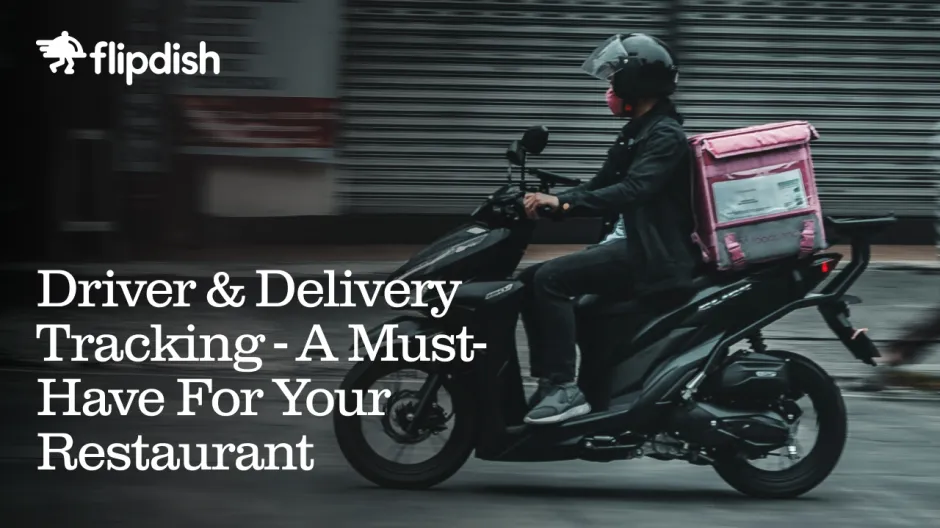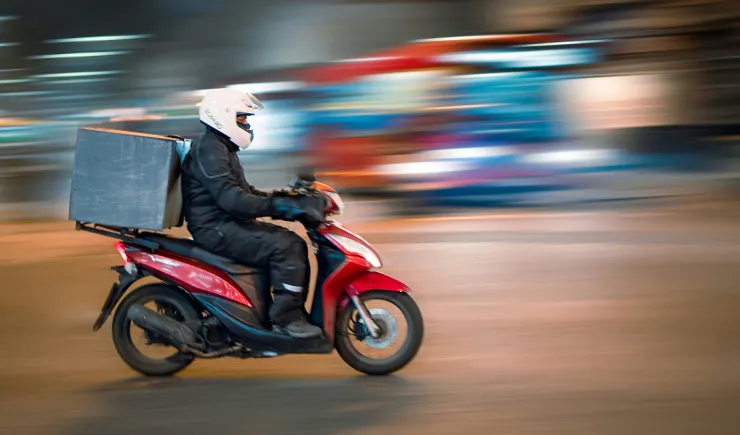Driver & delivery tracking: a must-have for your restaurant
As online ordering continues to dominate the restaurant industry, real-time driver and delivery tracking is no longer a luxury. It's a necessity. This technology offers clear operational benefits, including reduced delivery delays, improved customer communication, and fuel cost savings. In this guide, we explore how delivery tracking systems work, why they’re critical for modern restaurants, and how to implement them successfully for maximum impact.

Table of Contents
What Is Driver & Delivery Tracking?
Driver and delivery tracking refers to the use of GPS and smart software to monitor the exact location and route of drivers in real-time. These systems allow restaurants to:
View live delivery status
Track driver performance
Monitor delivery times and routes
Analyse trends for operational improvement
Advanced delivery tracking systems often integrate with POS, dispatch, and customer communication tools. This holistic visibility helps restaurants optimise performance and ensure that every delivery is completed efficiently and accurately.
Why Real-Time Tracking Matters More Than Ever
In 2025, customer expectations continue to be shaped by the era of instant gratification. From ordering taxis to groceries, people now expect updates in real time, and restaurant delivery is no exception. Real-time tracking directly meets this demand by offering customers accurate delivery ETAs, live location updates and consistent communication throughout the order journey.
As Matt Maloney, Founder and Former CEO of Grubhub, once said:
“Transparency is key to a great delivery experience. Real-time tracking gives customers peace of mind and helps restaurants manage expectations.”
This level of visibility does more than just satisfy curiosity. It builds trust, reduces anxiety, and sets a positive tone from the moment an order is placed. Customers are far less likely to call the restaurant for updates when they can track the order themselves, which lightens the load on your support team.
Real-time tracking also helps eliminate common friction points such as miscommunication, incorrect delivery locations and long wait times. With access to a live dashboard, your staff can proactively address delays, reroute drivers if needed, and update customers quickly if any issues arise. This reduces complaints, increases customer satisfaction, and enhances your brand’s reliability.
In an increasingly competitive landscape, the ability to offer real-time tracking is not just a convenience. It’s a differentiator that builds loyalty and keeps your restaurant top-of-mind for future orders.
Benefits for Restaurants and Customers
For Restaurants:
Improved efficiency: Know exactly where each driver is and adjust assignments accordingly.
Fewer complaints: Minimise delays and delivery issues.
Data-driven decisions: Gain insight into routes, fuel use, and delivery speed.
Higher retention: Happy customers are loyal customers.
For Customers:
Live ETA updates reduce uncertainty.
Transparent service builds trust.
Higher satisfaction leads to repeat business and positive reviews.
"Our customers appreciate knowing exactly when their food will arrive. Real-time updates help us manage expectations and improve overall satisfaction.”
— Lisa Fain, Chef and Restaurant Owner
What Happens When You Don’t Use Tracking?
Without delivery tracking, restaurants risk:
Missed or late deliveries
Dissatisfied and vocal customers
Poor ratings on delivery platforms
Inefficient route planning
Rising fuel costs
Chris Webb, CEO in of ChowNow, quotes:
"Consumers expect to see exactly where their food is and when it will arrive. Real-time tracking has become a baseline expectation, not a luxury."
Ignoring this baseline expectation can mean falling behind competitors who provide more reliable and transparent service.
How to Implement an Effective Delivery Tracking System

1. Choose the Right Technology
Begin by selecting a delivery tracking solution that integrates seamlessly with your current technology stack, particularly your point-of-sale (POS) system and order management software. This integration ensures smooth data flow and minimizes manual entry errors. When evaluating platforms, prioritize features such as:
- Real-time GPS tracking to monitor delivery progress as it happens
- Route optimisation tools that help reduce delivery times and fuel costs
- Custom delivery notifications that keep customers informed and engaged
- Driver analytics and performance reporting to track reliability and efficiency
A robust system should offer mobile compatibility, reliable support, and scalability to match your growth.
2. Train Your Staff Thoroughly
Even the best technology requires human efficiency to reach its full potential. Make sure all team members involved in the delivery process are fully trained. This includes kitchen staff preparing orders, dispatchers coordinating deliveries, and drivers interacting with customers. Training should cover how to use the tracking system, handle delays, communicate updates, and troubleshoot common issues. A well-trained team ensures customers receive a consistent and professional experience from start to finish.
3. Monitor, Adjust, and Optimise
Implementation doesn't stop once the system is live. Continuously use the data collected to refine and improve your operations. Leverage the platform’s insights to:
- Adjust delivery routes based on real-time traffic and customer locations for greater fuel efficiency
- Evaluate driver performance using metrics like delivery times, customer feedback, and completion rates
- Identify bottlenecks during peak hours and make scheduling or staffing adjustments accordingly
Regularly reviewing performance metrics allows you to proactively resolve issues, reduce delivery times, and enhance the overall customer experience.
FAQs
Driver and delivery tracking uses GPS and software to monitor driver location and movement, giving restaurants control over deliveries and enabling efficient service.
Customers receive live updates and estimated delivery times, making the process transparent and stress-free, which improves satisfaction and encourages repeat business.
Restaurants risk delays, inefficient routing, higher fuel costs, unhappy customers, and negative reviews — all of which damage profitability and brand reputation.


